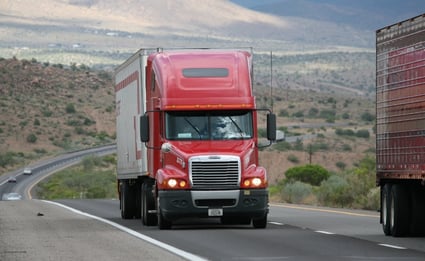5 Best Practices for Transportation Network Optimization
Jesse Kelber - January 07, 2020

Remember your last car trip? You spent all that time planning your route to maximize the sights you would see. Then you organized your equipment and snacks and packed the car just right so everything was easily accessible. Can you imagine what would have happened if you went to leave and the car didn’t start? Now your whole itinerary is thrown off, you have to call roadside assistance, change the hotel reservations, not the way to start a great vacation. The analogy to the transportation leg of your supply chain is clear—if you neglect one segment the whole system can come crashing down. In order to optimize your end-to-end supply chain, you need to pay close attention to the transportation network. This is often the place where systems break down and costs can spiral out of control. On the other hand, just as doing preventative maintenance on your car eliminates the possibility of the failure of your vacation, optimizing your transportation network can eliminate cost overruns and other disruptions to your smoothly functioning supply chain. Follow these best practices and you’ll be off to a great start.
1. Automate Where Possible
When it comes to optimizing part of a supply chain, automation is your best friend. One quick comment before we cover this topic, we are not talking about autonomous trucks—that’s a gigantic subject better covered elsewhere. What we are talking about is automating the segments of the transportation network that are ripe for it, namely picking/packing, routing, and fleet maintenance.
Picking and Packing
The combination of robotic pickers, trackers on forklifts, and smart pallets helping identify the most efficient location for storage of every single item within each shipment is transforming the transportation of goods. This use of Logistics 4.0 technology at the warehouse end of your transportation network can save time and money by cutting truck idle time and filling in empty loads.
Routing
Once the shipment leaves the warehouse, GPS tracking and real-time analytics takes over. Advanced analytics takes in data from your trucks’ GPS trackers, combines this with real-time data on traffic flows, fuel costs, and weather patterns to provide the most efficient route possible. Then your SCMS delivers that route to the truck seamlessly, letting the driver focus on getting the goods to their destination safely and quickly.
Fleet Maintenance
It’s important to note, we’re not saying robots are going to be fixing your trucks. What we’re referring to here is the ability of software to alert you to impending maintenance needs before the truck breaks down. This allows you to perform the needed repairs during pre-existing downtime and eliminate the disruption of an unexpected breakdown and the delays they generally cause.
2. Utilize Integrated Solutions
Visibility and transparency are crucial to an optimized transportation network. Industry 4.0 tech such as GPS tracking, IoT sensors, and smart pallets allow complete access to the location and condition of each individual piece of each individual shipment. Not to mention the condition of the trucks and ships doing the transporting. And all of this is integrated into your overall supply chain management solution either by way of a module within the software or via an API connection. This level of integration means you’re always fully aware of your transportation situation and how it relates to the rest of your supply chain health.
3. Find the Right Mix of Historical Data and Real-Time Information Flow
Until the integration of advanced analytics into the standard digital transformation toolkit, transportation planning was rooted in historical data only. That data is now just one piece of the fully optimized transportation network. Using data from each touchpoint in the network, a fully integrated SCMS combines this existing historical data with real-time input from sensors, trackers, and other integrated systems to provide you with the most robust and accurate forecasts possible. The trick here is knowing how much history is relevant, while at the same time being able to limit the real-time information to just what is relevant to that specific shipment.
4. Use Digital Twins for Real-Time Modeling
Digital twin is the term used to describe a virtual model of a business process or system. Taking advantage of the same industry 4.0 technology already discussed, you can create an exact replica of your transportation network. This model allows you to do what’s called ‘sandbox testing,’ where you digitally tweak one aspect of the process in order to see what the expected outcome will be. A robust SCMS may include a network planning module that will walk you through the steps to creating your twin, letting you test changes to any number of variables, including but not limited to:
- Customers
- Locations
- Volumes
- Shipping routes
- Hub constraints
Being able to test major changes, and even minor tweaks, in a digital environment is a true game-changer. No longer will you be surprised by unforeseen impacts to your logistics in the real world. Your digital twin uses the best of available technology, from AI and machine learning to data flowing in from your IoT sensors on the warehouse floor, to provide you with a safe place to check your work without impacting your bottom line or your customers.
5. Monitor Your KPIs
KPIs and metrics are critical to any optimization project. It’s the data collected and analyzed from these metrics that will tell you which changes are working and which aren’t, allowing for on-the-go adjustments. Establish your metrics based on an agreed-upon set of goals and standards, then use your SCMS to monitor them consistently. IoT sensors, your warehouse picking and packing equipment, and GPS location information coming in from your fleet all combine to provide unprecedented access to your end-to-end transportation network. Start with the KPIs you’ve always relied on, they’re still quite relevant:
- On-time delivery percentage
- Freight cost per unit
- Transit time
- Percentage of capacity used
What you’ll start to see as time goes by is that, with the increased quality and accuracy of the data being fed into your analytics engine, you can move to much more nuanced measures that will allow you to drill down and get as granular as you need in order to continue improving these numbers. From there, you can visualize the direction you need to move in, and you can develop your own custom metrics based on the exact data flowing in from the field.
If you want to learn more get your Guide to Logistics 4.0
In this Guide you will learn:
-
Why a strategic process in transportation planning is a top priority for digitalization
-
What megatrends will increase supply chain volatility
-
How to manage it
LATEST POSTS
- Understand Circular Economy in The Manufacturing Industry
- How Can Industry 4.0 IT Integration Be Achieved Smoothly?
- The Significance of Order Sequencing in Discrete Manufacturing
- How to improve your Supply Chain Management: The Power of Control Towers
- Optimizing Human Resource Scheduling in Manufacturing: A Technological Approach



